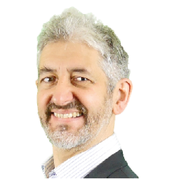IEshelter clearly had other fish to fry yesterday, when DatacenterDynamics spoke to it about a complaint from a Bavarian trout farmer. It’s been confirmed today that the German data center provider will be snapped up by NTT Communications.
The data center firm welcomed the jaws of the Japanese giant, with e-shelter’s CEO saying NTT will bolster investment in the firm. Also, every data center provider tells us, multinational customers are the norm these days - and e-shelter clearly hopes it can grab and retain them better with the addtion of NTT’s international network and global footprint of data centers.
It’s all about size
It’s a bit of a contrast to the stated benefits of the Interxion-Telecity merger. That is a merger of two European providers, which combines two sets of data centers in heavily-overlapping territories. That did nothing to expand into other territories, but everyone knows that’s the next step for the combined entity, and will be enabled by its bigger size.
It’s all about size, in other words. Interxion and Telecity claim that when they have finished merging with each other they will be number two in the European market. And now NTT has this deal with e-shelter to put it into the number three spot.
But, as big fish eat up smaller fish, and medium sized fish swim in shoals, let’s see what we can learn from the bottom of the ecosystem - from the story of e-shelter’s groundwater.
The politics of heat
It’s green to use groundwater for cooling. Water in an aquifer has a low temperature, and using it to cool a data center is a good low energy alternative to running chillers. Telehouse does it in Amsterdam, and e-shelter will do it at a new 18,000 sq m data center at Unterschleissheim, north of Munich, after use, the water is pumped back, unchanged but slightly warmer.
Anton Kurz, owner of Forellenhof Nadler fish farm, said the groundwater system would harm his fish, not because of any pollution, but simply because it would slightly warm the water. A temperature rise can reduce the yield from batches of hatchlings, because germs and pests thrive in warmer water, causing disease and harm the young fishes’ diet.
Kurz argued that water pumped back into the aquifer would cause a small temperature rise, in the springs he uses, even though his farm is a few kilometres away, and the water pumped back is not massively hotter than the original aquifer temperature.
The German authorities imposed a compromise, saying that e-shelter must limit the amount of groundwater uses to four million cubic metres per year, instead of the eight million it wanted, and Herr Kurz withdrew his complaint, on condition that the water temperature is monitored to make sure there is no significant warming at his farm.
e-shelter clearly felt a little frustrated that its green efforts faced opposition. The company has even greener efforts elsewhere, chief marketing officer Melanie Rittweger told us, including a data center in Vienna which will connect into the city’s district heating system, and provide heat for local homes and offices. The e-shelter office in Frankfurt is entirely heated by data center waste heat, she said. There’s a lot of district heating in Europe, including a planned EcoDataCenter in Sweden.
The Munich site has to get rid of its heat because it is in a rural setting, and there are no customers for its heat near enough to benefit from it. Ironically, if it were possible to warm a remote site in the way Kurz claimed, e-shelter would have a market for its heat.
One fanciul idea though: if the NTT’s purchase of e-shelter goes through, Herr Kurz could benefit from increased local demand for sushi.
Some of this story appeared on Green Data Center News.

